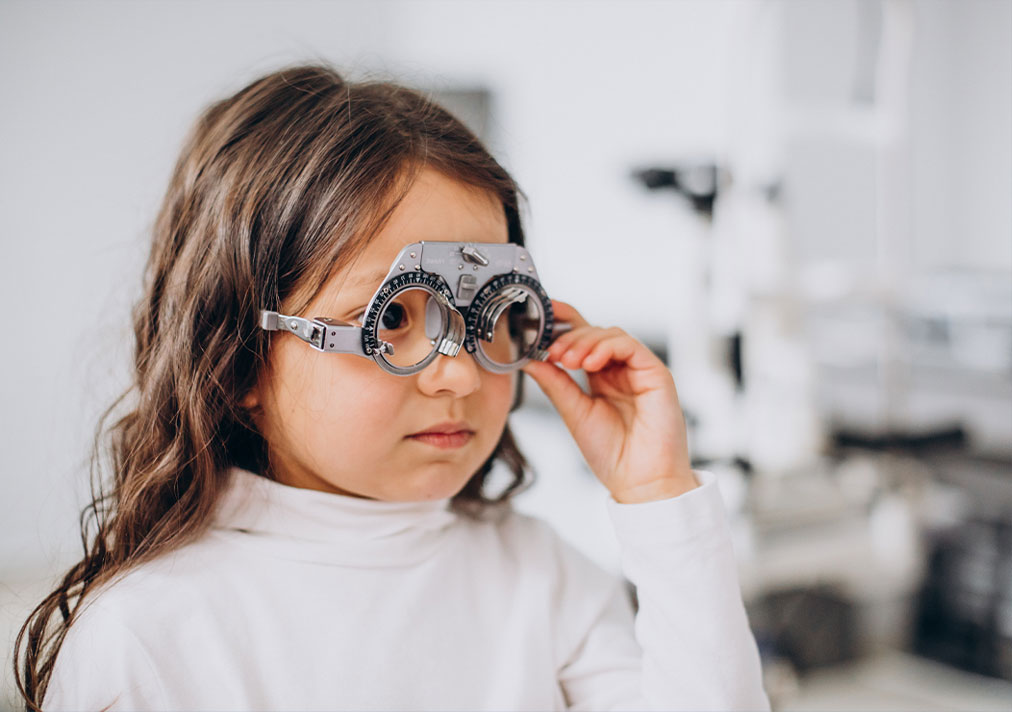Genes determine the color of your eyes, but the fact is that genetics also play a role far beyond that. They are also responsible for inflicting various kinds of diseases, some of them very rare. Read on to know how hereditary disorders impact vision, causing some menacing issues.
Genetics plays an important role in increasing our chances of developing many medical disorders, including those that impact vision and eye health. According to experts, more than 300 eye ailments and conditions are attributed to hereditary factors, many of which include:
- Albinism: Age-related macular degeneration (AMD)
- Colour-blindness
- Congenital cataracts
- Congenital Glaucoma
- Night blindness
- Retinitis pigmentosa
- Optic atrophy
- Eye malformations
How are genes involved in vision issues?
Doctors say more than 60 per cent cases of blindness among infants are caused by inherited eye diseases. Many of these eye diseases have an autosomal dominant inheritance pattern, which means even one copy of an altered gene in each cell is sufficient to cause the disorder. Most people with these conditions have an affected parent or a close family Member with the disorder.
According to experts, eye issues can also have an autosomal recessive pattern of inheritance in which both copies of a gene in each cell have mutations. It means that if your parents have an autosomal recessive condition and each carry one copy of the mutated gene, they may typically not show signs and symptoms of the condition, but it may be passed on to you.
This condition, experts say, can also be inherited in an X-linked pattern. The genes associated with X-linked ailments are located on the X chromosome, which is one of the ty sex chromosomes.
Glaucoma
Glaucoma is a group of eye diseases that causes progressive damage to the optic nerve which is the central pathway connecting your eyes to your brain. From receding side vision or peripheral vision loss to eventual blindness, glaucoma can cause a lot of harm to your eyes.
Experts point it to the MYOC gene mutations in some people with primary congenital glaucoma. This gene instructs the body in the production of a protein called myocilin, which is responsible for the regulation of intraocular pressure. Myocilin gets involved with other proteins to form a protein complex but is not successful due to mutations, and when functional complexes are unable to incorporate it, myocilin beings to get accumulated in the trabecular meshwork and ciliary body,leading to eye issues and an early onset of glaucoma.
“Untreated, it causes blurred vision and visual impairment. Having a patient with glaucoma increases the risk of other close relatives develop the disease by four to nine times. Similarly, a person with family members who have developed cataracts is more inclined to acquire them than those who do not have a genetic history,”
Cataracts
Cataracts make it extremely difficult for you to see things causing a fog or cloudy view, which only gets worse with time.
The type of cataract that is present at birth or gets developed during the early phase of childhood is commonly referred to as congenital cataracts with an estimated prevalence between 1-6 cases per 10,000 live births. Genetic mutations remain one of the most significant causes of cataract where several classes of genes are involved in encoding proteins like crystalline and cytoskeletal structural proteins.
Macular degeneration
Macular degeneration or MD is a collective name given to a group of rare and inherited eye diseases that cause vision issues in both adults as well as children. Scientists have identified the gene mutations in the ABCA4 gene which is responsible for the majority of the cases of MD cases.
How to diagnose genetic eye diseases?
According to experts, genetic testing is the gold standard for the detection and management of hereditary eye issues.
“Constructing the right diagnosis is vital for both patients and their family members for a variety of reasons: i allows for a better comprehension of the natural history course and prediction of disease prognosis; it assists in customising correct follow- up and treatment, including potential gene-targeted treatments; it leads to a decrease in disease incidence through genetic screening and counselling in high-risk populations; and it allows patients to pursue prenatal counselling and reproductive planning,” there are some lifestyle changes a person can make to help reduce overall risk and manage hereditary eyesight conditions. Even if there is no previous history of eye problems, everyone should undergo a yearly eye exam
Genes determine the colour of your eyes, but the fact is that genetics also play a role far beyond that. They are also responsible for inflicting various kinds of diseases, some of them very rare. Read on to know how hereditary disorders impact vision, causing some menacing issues.
Genetics plays an important role in increasing our chances of developing many medical disorders, including those that impact vision and eye health. According to experts, more than 300 eye ailments and conditions are attributed to hereditary factors, many of which include:
- Albinism: Age-related macular degeneration (AMD)
- Colour-blindness
- Congenital cataracts
- Congenital Glaucoma
- Night blindness
- Retinitis pigmentosa
- Optic atrophy
- Eye malformations
How are genes involved in vision issues?
Doctors say more than 60 per cent cases of blindness among infants are caused by inherited eye diseases. Many of these eye diseases have an autosomal dominant inheritance pattern, which means even one copy of an altered gene in each cell is sufficient to cause the disorder. Most people with these conditions have an affected parent or a close family Member with the disorder.
According to experts, eye issues can also have an autosomal recessive pattern of inheritance in which both copies of a gene in each cell have mutations. It means that if your parents have an autosomal recessive condition and each carry one copy of the mutated gene, they may typically not show signs and symptoms of the condition, but it may be passed on to you.
This condition, experts say, can also be inherited in an X-linked pattern. The genes associated with X-linked ailments are located on the X chromosome, which is one of the ty sex chromosomes.
Glaucoma
Glaucoma is a group of eye diseases that causes progressive damage to the optic nerve which is the central pathway connecting your eyes to your brain. From receding side vision or peripheral vision loss to eventual blindness, glaucoma can cause a lot of harm to your eyes.
Experts point it to the MYOC gene mutations in some people with primary congenital glaucoma. This gene instructs the body in the production of a protein called myocilin, which is responsible for the regulation of intraocular pressure. Myocilin gets involved with other proteins to form a protein complex but is not successful due to mutations, and when functional complexes are unable to incorporate it, myocilin beings to get accumulated in the trabecular meshwork and ciliary body,leading to eye issues and an early onset of glaucoma.
“Untreated, it causes blurred vision and visual impairment. Having a patient with glaucoma increases the risk of other close relatives develop the disease by four to nine times. Similarly, a person with family members who have developed cataracts is more inclined to acquire them than those who do not have a genetic history,”
Cataracts
Cataracts make it extremely difficult for you to see things causing a fog or cloudy view, which only gets worse with time.
The type of cataract that is present at birth or gets developed during the early phase of childhood is commonly referred to as congenital cataracts with an estimated prevalence between 1-6 cases per 10,000 live births. Genetic mutations remain one of the most significant causes of cataract where several classes of genes are involved in encoding proteins like crystalline and cytoskeletal structural proteins.
Macular degeneration
Macular degeneration or MD is a collective name given to a group of rare and inherited eye diseases that cause vision issues in both adults as well as children. Scientists have identified the gene mutations in the ABCA4 gene which is responsible for the majority of the cases of MD cases.
How to diagnose genetic eye diseases?
According to experts, genetic testing is the gold standard for the detection and management of hereditary eye issues.
“Constructing the right diagnosis is vital for both patients and their family members for a variety of reasons: i allows for a better comprehension of the natural history course and prediction of disease prognosis; it assists in customising correct follow- up and treatment, including potential gene-targeted treatments; it leads to a decrease in disease incidence through genetic screening and counselling in high-risk populations; and it allows patients to pursue prenatal counselling and reproductive planning,” there are some lifestyle changes a person can make to help reduce overall risk and manage hereditary eyesight conditions. Even if there is no previous history of eye problems, everyone should undergo a yearly eye exam




